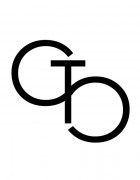1.
Provenance data for individual artworks
Mapping Titian, a new open-source website spearheaded by Boston University professor Jodi Cranston, tracks artworks and allows users to map out provenance information. The initiative aims to make researching histories of individual works, including details of owners and past transactions, easier for art historians. Users will be able to make individual entries on the website as well as publish their own projects. These submissions will be reviewed for accuracy purposes and then added to the site by an administrator.
2.
London citywide culture contest
London’s mayor Sadiq Khan announced that the city is organising a new cultural contest designed to bolster support for the arts and promote creativity. The competition will name one of London’s communities its first-ever Borough of Culture. Each winning borough will receive up to 1.1 million revenue grant. Applicants will have five months to prepare their bids. The incentives for entering the competition include boosting tourism to all the boroughs and growing their local economies.
3.
Chicago’s gift for public art
The city of Chicago has announced that it will commission artists to create murals, sculptures, and other works in all fifty city wards beginning this summer as part of its “Year of Public Art,” a new $1 million initiative to bring art to public spaces. The Department of Cultural Affairs and Special Events is organising a paid internship program that will provide young adults with the opportunity to work with community groups on public art projects. All of the artworks produced will be dedicated during a Public Art Festival that will take place in October.
4.
A new museum by Pinault
Billionaire art collector François Pinault has revealed details of his plan to open a museum dedicated exclusively to contemporary art. The edifice, according to its architect, Tadao Ando, will be a “completely circular museum” located right between the Centre Pompidou and the Louvre, inside of a building that was once used for wheat storage and then served as the base for the commodities stock market. The museum is scheduled to open in 2019 and will have close to 920 square meters of exhibition space, a black-box theatre, and an auditorium below ground level that will be able to seat three hundred people. The museum will be funded entirely by Pinault’s family company.
5.
UK to digitalise public sculptures
Britain has launched an initiative to digitise all of its publicly owned sculptures by 2020, making it the first country to create an online catalogue of its entire national sculpture collection.
This three-year initiative will make images of 170,000 sculptures from public collections in arts institutions, parks and public squares available on the website of Art UK, the registered name for the Public Catalogue Foundation, which has been digitising works in the country since 2002.
6.
The opening of Documenta 14
After Athens, the second part of the exhibition opened in Kassel, coincidentally with the beginning of the Skulptur Projekte Münster’s fifth iteration, which will take place throughout the German town of Münster, the cultural centre of Germany’s Westphalia region. This year marks the first time the exhibition is being hosted by two cities. Artistic director Adam Szymczyk first proposed holding part of the exhibition in Athens in 2013, at the height of Greece’s economic crisis, to make the exhibition in a place where people can see how problematic things are at the moment, and how much worse they may soon become.
7.
Documenta Institute in Kassel
Kassel’s city council voted in favour of building a centre dedicated to Documenta at a site adjacent to the University of Kassel. After hosting the contemporary art exhibition every five years since 1955, Kassel will “keep alive the concept and experience of Documenta in the years between exhibitions,” the city council said in a statement. Called Documenta Institute, the research centre will be managed by the organisers of the exhibition, the city of Kassel, and the Fridericianum museum. The building will employ around twenty-five staff members and will host talks, conferences, and other events.
8.
Art Basel’s 48th edition
Returning for its forty-eighth year, Art Basel opened with a roster of 291 galleries from thirty-five countries and six continents. Seventeen galleries will be participating for the first time.
Dedicated to prints and limited edition works, the Edition sector brought together fifteen specialists in the field. The Feature sector presented thirty-two galleries with curatorial projects of both historical and contemporary work.
9.
Fondazione Piero Manzoni for Hauser & Wirth
The Fondazione Piero Manzoni in Milan has announced that Hauser & Wirth gallery will represent the estate of the late Italian conceptual artist Piero Manzoni, who is best known for projects that challenged the nature of the art object. Manzoni had a brief but influential career, which ended with his untimely death from a heart attack in 1963, at the age of twenty-nine. In the May 1998 issue of Artforum, Barry Schwabsky reviewed the artist’s exhibition at Serpentine Gallery, writing that Manzoni “covered more territory—not without false steps—in six years than most do in sixty, and artists are still sorting out the implications of his work.”
10.
ACME. Closes in Los Angeles
ACME., a staple of the Los Angeles gallery scene, will close its doors after twenty-two years. Founded by Robert Gunderman and Randy Sommer in 1994, ACME. was first located in Santa Monica. It later moved to the 6150 Wilshire complex near the Los Angeles County Museum of Art, where it remained for nineteen years, before it found its current location in the Frogtown/Elysian Valley area of Los Angeles.
Silvia Meloni
Featured Image: Preview of Tadao Andos project for Pinaults museum in Paris. Courtesy Artefactory Lab.

